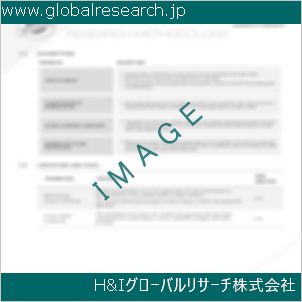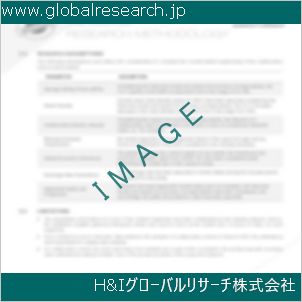Table of Contents
1 Industry Overview of Pyrrolidine
1.1 Definition and Specifications of Pyrrolidine
1.1.1 Definition of Pyrrolidine
1.1.2 Specifications of Pyrrolidine
1.2 Classification of Pyrrolidine
1.3 Applications of Pyrrolidine
1.3.1 Nuclear Application
1.3.2 Non-Nuclear Application
1.4 Industry Chain Structure of Pyrrolidine
1.5 Industry Overview and Major Regions Status of Pyrrolidine
1.5.1 Industry Overview of Pyrrolidine
1.5.2 Global Major Regions Status of Pyrrolidine
1.6 Industry Policy Analysis of Pyrrolidine
1.7 Industry News Analysis of Pyrrolidine
2 Manufacturing Cost Structure Analysis of Pyrrolidine
2.1 Raw Material Suppliers and Price Analysis of Pyrrolidine
2.2 Equipment Suppliers and Price Analysis of Pyrrolidine
2.3 Labor Cost Analysis of Pyrrolidine
2.4 Other Costs Analysis of Pyrrolidine
2.5 Manufacturing Cost Structure Analysis of Pyrrolidine
2.6 Manufacturing Process Analysis of Pyrrolidine
3 Technical Data and Manufacturing Plants Analysis of Pyrrolidine
3.1 Capacity and Commercial Production Date of Global Pyrrolidine Major Manufacturers in 2023
3.2 Manufacturing Plants Distribution of Global Pyrrolidine Major Manufacturers in 2023
3.3 R&D Status and Technology Source of Global Pyrrolidine Major Manufacturers in 2023
3.4 Raw Materials Sources Analysis of Global Pyrrolidine Major Manufacturers in 2023
4 Capacity, Production and Revenue Analysis of Pyrrolidine by Regions, Types and Manufacturers
4.1 Global Capacity, Production and Revenue of Pyrrolidine by Regions 2019-2024
4.2 Global and Major Regions Capacity, Production, Revenue and Growth Rate of Pyrrolidine 2019-2024
4.3 Global Capacity, Production and Revenue of Pyrrolidine by Types 2019-2024
4.4 Global Capacity, Production and Revenue of Pyrrolidine by Manufacturers 2019-2024
5 Price, Cost, Gross and Gross Margin Analysis of Pyrrolidine by Regions, Types and Manufacturers
5.1 Price, Cost, Gross and Gross Margin Analysis of Pyrrolidine by Regions 2019-2024
5.2 Price, Cost, Gross and Gross Margin Analysis of Pyrrolidine by Types 2019-2024
5.3 Price, Cost, Gross and Gross Margin Analysis of Pyrrolidine by Manufacturers 2019-2024
6 Consumption Volume, Consumption Value and Sale Price Analysis of Pyrrolidine by Regions, Types and Applications
6.1 Global Consumption Volume and Consumption Value of Pyrrolidine by Regions 2019-2024
6.2 Global and Major Regions Consumption Volume, Consumption Value and Growth Rate of Pyrrolidine 2019-2024
6.3 Global Consumption Volume and Consumption Value of Pyrrolidine by Types 2019-2024
6.4 Global Consumption Volume and Consumption Value of Pyrrolidine by Applications 2019-2024
6.5 Sale Price of Pyrrolidine by Regions 2019-2024
6.6 Sale Price of Pyrrolidine by Types 2019-2024
6.7 Sale Price of Pyrrolidine by Applications 2019-2024
6.8 Market Share Analysis of Pyrrolidine by Different Sale Price Levels
7 Supply, Import, Export and Consumption Analysis of Pyrrolidine
7.1 Supply, Consumption and Gap of Pyrrolidine 2019-2024
7.2 Global Capacity, Production, Price, Cost, Revenue, Supply, Import, Export and Consumption of Pyrrolidine 2019-2024
7.3 USA Capacity, Production, Price, Cost, Revenue, Supply, Import, Export and Consumption of Pyrrolidine 2019-2024
7.4 EU Capacity, Production, Price, Cost, Revenue, Supply, Import, Export and Consumption of Pyrrolidine 2019-2024
7.5 China Capacity, Production, Price, Cost, Revenue, Supply, Import, Export and Consumption of Pyrrolidine 2019-2024
7.6 Japan Capacity, Production, Price, Cost, Revenue, Supply, Import, Export and Consumption of Pyrrolidine 2019-2024
8 Major Manufacturers Analysis of Pyrrolidine
8.1 Manufacturer One
8.1.1 Company Profile
8.1.2 Product Picture and Specifications
8.1.2.1 Type I
8.1.2.2 Type II
8.1.2.3 Type III
8.1.3 Capacity, Production, Price, Cost, Gross and Revenue
8.1.4 Contact Information
8.2 Manufacturer Two
8.2.1 Company Profile
8.2.2 Product Picture and Specifications
8.2.2.1 Type I
8.2.2.2 Type II
8.2.2.3 Type III
8.2.3 Capacity, Production, Price, Cost, Gross and Revenue
8.2.4 Contact Information
8.3 Manufacturer Three
8.3.1 Company Profile
8.3.2 Product Picture and Specifications
8.3.2.1 Type I
8.3.2.2 Type II
8.3.2.3 Type III
8.3.3 Capacity, Production, Price, Cost, Gross and Revenue
8.3.4 Contact Information
8.4 Manufacturer Four
8.4.1 Company Profile
8.4.2 Product Picture and Specifications
8.4.2.1 Type I
8.4.2.2 Type II
8.4.2.3 Type III
8.4.3 Capacity, Production, Price, Cost, Gross and Revenue
8.4.4 Contact Information
8.5 Manufacturer Five
8.5.1 Company Profile
8.5.2 Product Picture and Specifications
8.5.2.1 Type I
8.5.2.2 Type II
8.5.2.3 Type III
8.5.3 Capacity, Production, Price, Cost, Gross and Revenue
8.5.4 Contact Information
…
9 Marketing Trader or Distributor Analysis of Pyrrolidine
9.1 Marketing Channels Status of Pyrrolidine
9.2 Traders or Distributors with Contact Information of Pyrrolidine by Regions
9.3 Ex-work Price, Channel Price and End Buyer Price Analysis of Pyrrolidine
9.4 Regional Import, Export and Trade Analysis of Pyrrolidine
10 Industry Chain Analysis of Pyrrolidine
10.1 Upstream Major Raw Materials Suppliers Analysis of Pyrrolidine
10.1.1 Major Raw Materials Suppliers with Contact Information Analysis of Pyrrolidine
10.1.2 Major Raw Materials Suppliers with Supply Volume Analysis of Pyrrolidine by Regions
10.2 Upstream Major Equipment Suppliers Analysis of Pyrrolidine
10.2.1 Major Equipment Suppliers with Contact Information Analysis of Pyrrolidine
10.2.2 Major Equipment Suppliers with Product Pictures Analysis of Pyrrolidine by Regions
10.3 Downstream Major Consumers Analysis of Pyrrolidine
10.3.1 Major Consumers with Contact Information Analysis of Pyrrolidine
10.3.2 Major Consumers with Consumption Volume Analysis of Pyrrolidine by Regions
10.4 Supply Chain Relationship Analysis of Pyrrolidine
11 Development Trend of Analysis of Pyrrolidine
11.1 Capacity, Production and Revenue Forecast of Pyrrolidine by Regions and Types
11.1.1 Global Capacity, Production and Revenue of Pyrrolidine by Regions 2024-2029
11.1.2 Global and Major Regions Capacity, Production, Revenue and Growth Rate of Pyrrolidine 2024-2029
11.1.3 Global Capacity, Production and Revenue of Pyrrolidine by Types 2024-2029
11.2 Consumption Volume and Consumption Value Forecast of Pyrrolidine by Regions, Types and Applications
11.2.1 Global Consumption Volume and Consumption Value of Pyrrolidine by Regions 2024-2029
11.2.2 Global and Major Regions Consumption Volume, Consumption Value and Growth Rate of Pyrrolidine 2024-2029
11.2.3 Global Consumption Volume and Consumption Value of Pyrrolidine by Types 2024-2029
11.2.4 Global Consumption Volume and Consumption Value of Pyrrolidine by Applications 2024-2029
11.3 Supply, Import, Export and Consumption Forecast of Pyrrolidine
11.3.1 Supply, Consumption and Gap of Pyrrolidine 2024-2029
11.3.2 Global Capacity, Production, Price, Cost, Revenue, Supply, Import, Export and Consumption of Pyrrolidine 2024-2029
11.3.3 USA Capacity, Production, Price, Cost, Revenue, Supply, Import, Export and Consumption of Pyrrolidine 2024-2029
11.3.4 EU Capacity, Production, Price, Cost, Revenue, Supply, Import, Export and Consumption of Pyrrolidine 2024-2029
11.3.5 China Capacity, Production, Price, Cost, Revenue, Supply, Import, Export and Consumption of Pyrrolidine 2024-2029
11.3.6 Japan Capacity, Production, Price, Cost, Revenue, Supply, Import, Export and Consumption of Pyrrolidine 2024-2029
12 New Project Investment Feasibility Analysis of Pyrrolidine
12.1 New Project SWOT Analysis of Pyrrolidine
12.2 New Project Investment Feasibility Analysis of Pyrrolidine
13 Conclusion of the Global Pyrrolidine (CAS 123-75-1) Industry 2024 Market Research Report
| ※参考情報 ピロリジン(Pyrrolidine)は、有機化合物の一種であり、分子式C4H9Nを持つ環状のアミンです。この物質は、五員環のつながった炭素原子4つと窒素原子1つから成り立っており、その構造により特有の化学的性質を示します。ピロリジンは、色lessな液体であり、特有の香りを持ち、揮発性があるため取り扱いに注意が必要です。 ピロリジンの化学的な特徴として、炭素原子が環状に結合し、窒素原子がその環の中に組み込まれていることがあります。このため、ピロリジンはその環状構造ゆえに、開鎖したアミンに比べて安定性や反応性が異なることが挙げられます。また、窒素原子は一つの孤立電子対を持つため、ピロリジンは塩基性を示し、弱い酸のプロトンを引き寄せる性質があります。この性質により、ピロリジンは多くの化学反応で中間体または触媒として機能することが可能です。 ピロリジンは、さまざまな化学合成において重要な役割を果たしており、特に医薬品や農薬の合成に使用されることが多いです。また、有機合成化学の分野では、反応中間体としての利用が盛んであり、特定の反応において必要不可欠な試薬の一つです。さらに、ピロリジンを含む化合物群は、神経伝達物質やホルモンの模倣物質として機能することがあり、その医療的応用は広範です。 用途としては、主に以下のようなものが挙げられます。まず、ピロリジンは生理活性物質の合成において非常に重要な役割を果たしています。特に、アミノ酸やペプチドの合成においてその特有の性質を活かして利用されています。また、農業分野においてもピロリジンを元にした農薬が開発され、害虫防除や作物の成長促進に寄与しています。 さらに、ピロリジンは香料や食品添加物としても使用されています。その香りが独特であることから、香水や化粧品に応用されることもありますし、食品業界でも風味を引き立てるための添加物として使われることがあります。 このように、ピロリジンの関連技術も多岐にわたります。最近では、ピロリジンを利用した新しい反応経路の開発や、触媒としての利用の研究が進められており、より効率的な合成方法の確立に貢献しています。また、ナノテクノロジーや材料科学の分野でも、ピロリジンベースのポリマーが研究されており、新しい材料の創出につながる可能性があります。 加えて、ピロリジンはその性質上、環境にも影響を与えることがあるため、取り扱いについての規制も存在します。毒性の評価や安全性試験が行われており、使用にあたっては十分な注意が必要です。このような観点から、今後の研究ではピロリジンの安全性や環境への影響についての新たな知見が求められることになるでしょう。 総じて、ピロリジンは化学さまざまな分野で活用されている重要な有機化合物です。その特異な性質により、医薬品や農薬の合成から材料科学に至るまで、幅広い応用が期待されています。今後の研究がどのように発展していくのか、大いに注目されるところです。 |
❖ 免責事項 ❖
http://www.globalresearch.jp/disclaimer












